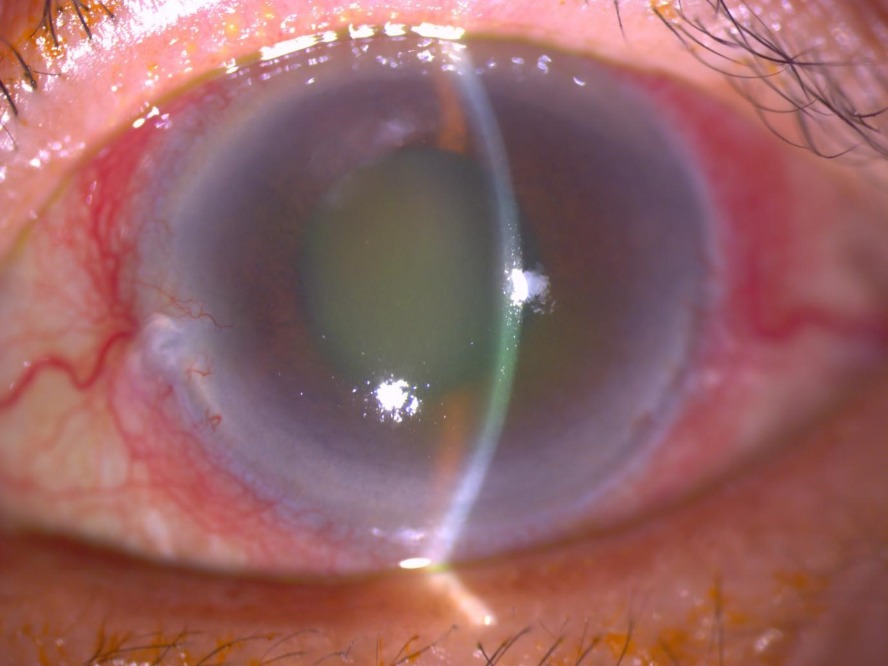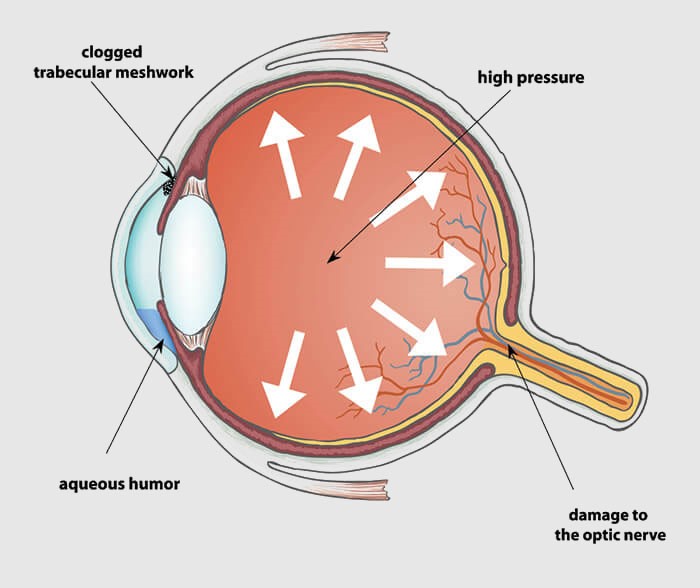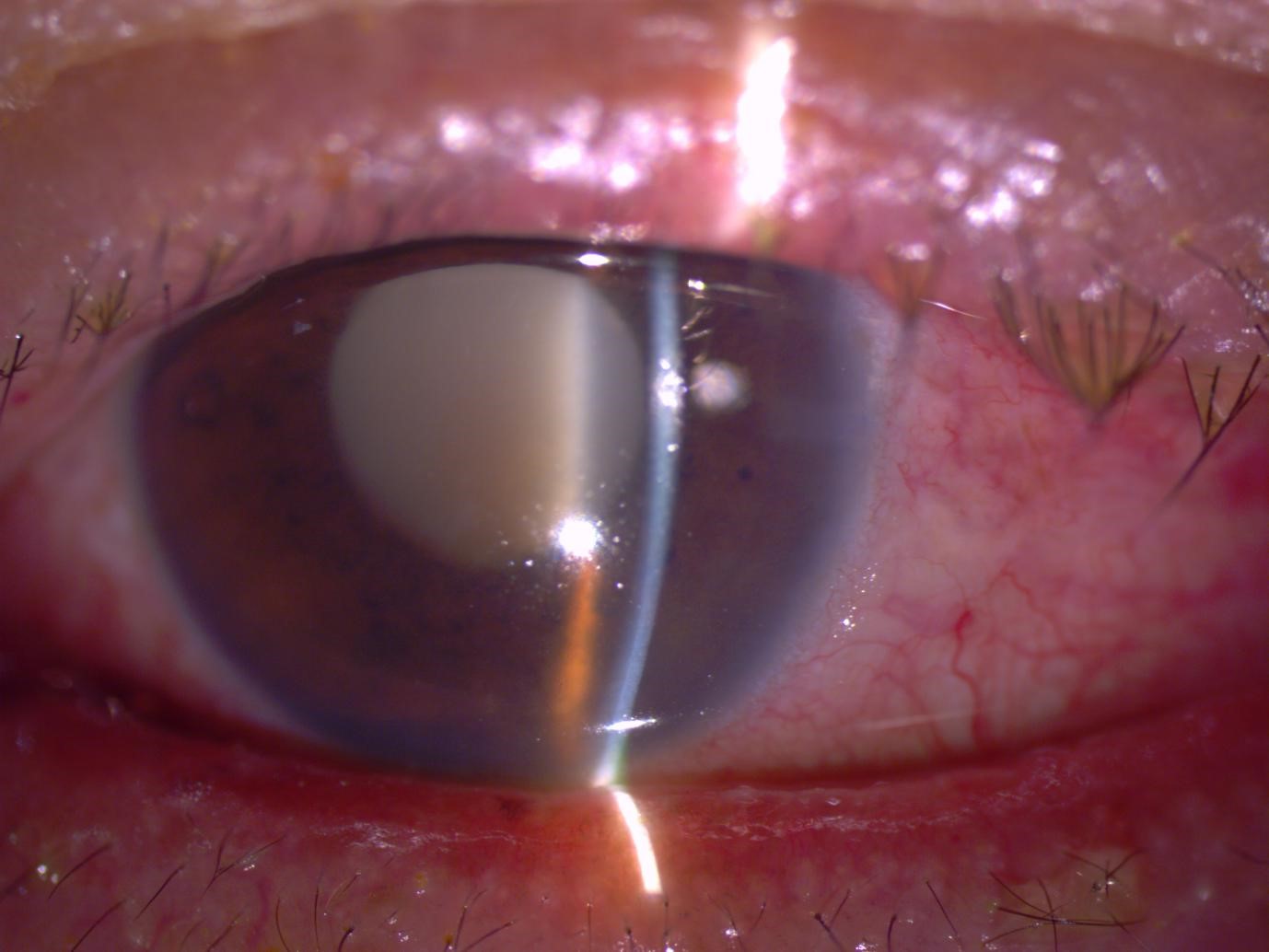
Glaucoma
Glaucoma is a group of diseases with characteristic optic nerve damage, resulting in irreversible loss of vision.
Majority of these diseases are characterised by raised pressure inside the eye. The level of pressure that causes damage can vary in different individuals and the resistance level of the optic nerve.
Glaucoma is known as the ‘silent thief of sight’ as the initial vision loss is mainly peripheral and not readily noticeable. Central vision and reading vision are usually retained until the late stages of the disease.
The patient may not experience any symptoms until late in the disease when most of the vision has already been permanently lost.

Above photo of eyeball showing damage to optic nerve due to eye pressure in glaucoma patient.

Glaucoma caused by severe cataract shown in photo above.
Glaucoma – Symptoms
What are the different types of glaucoma and their symptoms?
Open-angle glaucoma
Open-angle glaucoma accounts for the majority of glaucoma in most countries. It often has no symptoms and progresses slowly. The rise in intraocular pressure is slow and painless. Therefore call – silent thief of sight
Closed-angle glaucoma
Angle-closure glaucoma can either be acute or chronic. Acute angle-closure glaucoma is characterised by a sudden, dramatic increase in intraocular pressure. This can cause severe eye pain, redness, blurred vision and the appearance of haloes around lights. Headaches, nausea and vomiting may also be present . This is an eye emergency requires prompt treatment. The chronic form may show no symptoms, as in open-angle glaucoma.
Congenital glaucoma
Congenital glaucoma is rare and occurs at birth. Enlargement of the infant’s eyes, corneal haziness , watering and light sensitivity are possible symptoms .
Secondary glaucoma
Secondary glaucoma may be caused by many conditions such as diabetic eye disease, inflammation of the eye, tumours, previous eye surgery, injuries or mature cataracts , or the use of steroid medications on the eye.
Glaucoma – prevention
Most risk factors of glaucoma such as age, hereditary risk and race cannot be prevented. If you have a family history of glaucoma or are taking medications that put you at risk, regular eye examinations are essential. Early diagnosis is most important to prevent blindness as glaucoma nerve damage is irreversible.
Glaucoma - Causes and Risk Factors
What causes glaucoma?
Glaucoma is usually caused by fluid pressure in the eyeball that is too high for the optic nerve. The optic nerve carries visual impulses from your eye to the brain. This pressure build-up occurs because of problems of drainage of fluid within the eyeball.
Who is at risk of glaucoma?
- Age – your risk increases when you are over 80 years old
- Eye injuries
- Family history
- Corticosteroid eye drops
- High pressure inside the eye
- Refractive error (short-sightedness or myopia is a risk factor for open-angle glaucoma; long-sightedness or hyperopia is a risk factor for closed-angle glaucoma)
Glaucoma - Diagnosis
Glaucoma is diagnosed by measuring the pressure of the eyeball and assessing the optic nerve at the back of the eye for any damage. A visual field test is usually performed and further tests can be done to assess the optic nerve and the state of the drainage system of fluid in the eye.
The visual field test assesses the function of the optic nerve by checking if you can see spots of light of different intensities at different locations inside a visual field machine.
Glaucoma - Treatments
Glaucoma cannot be cured, but in most cases but in most cases, it can be successfully controlled.
Treatment include:
- Eye drops
- Oral medications
- Laser surgery
- Filtering surgery
- Drainage implants
All these treatments lower the intraocular pressure to a level that is safe for the eye. Even after successful control of the pressure, regular monitoring is still mandatory
Glaucoma is a chronic condition requiring lifelong follow up. The aim of treatment is to preserve the remaining vision. Damage from glaucoma cannot be reversed, therefore the importance of early diagnosis and continuous follow up for whole life of patient.
Disclaimer – Above are just general information and patients are advised to see their Eye Doctors for professional treatment.
